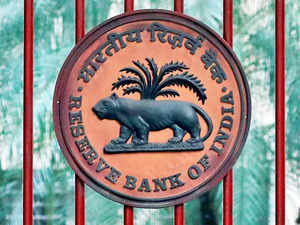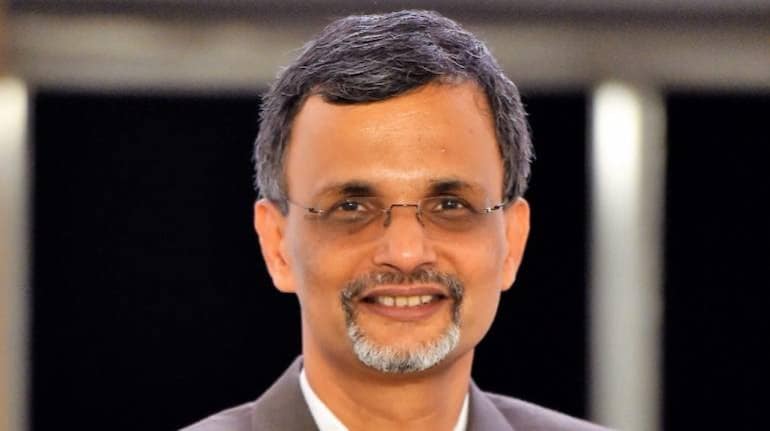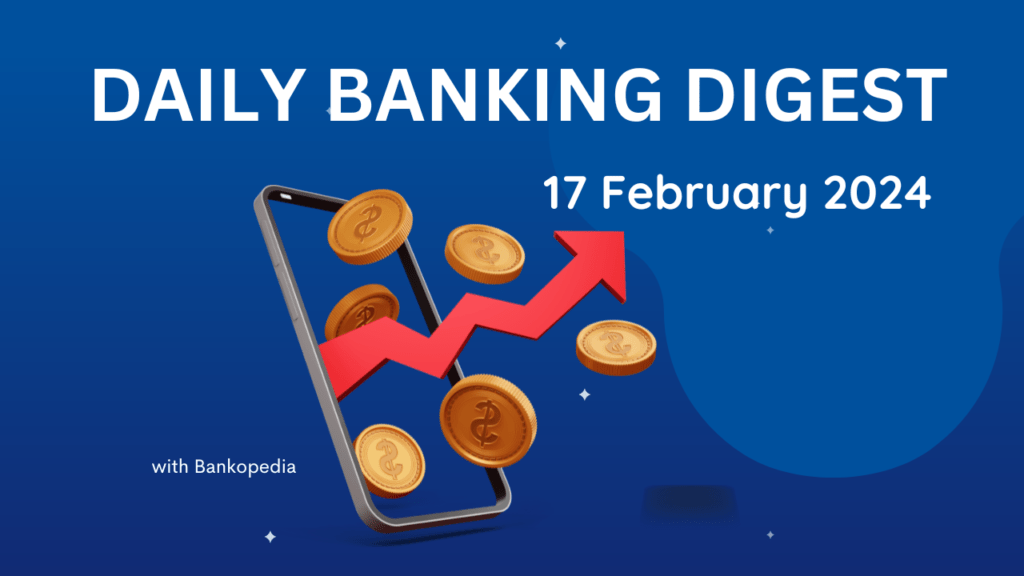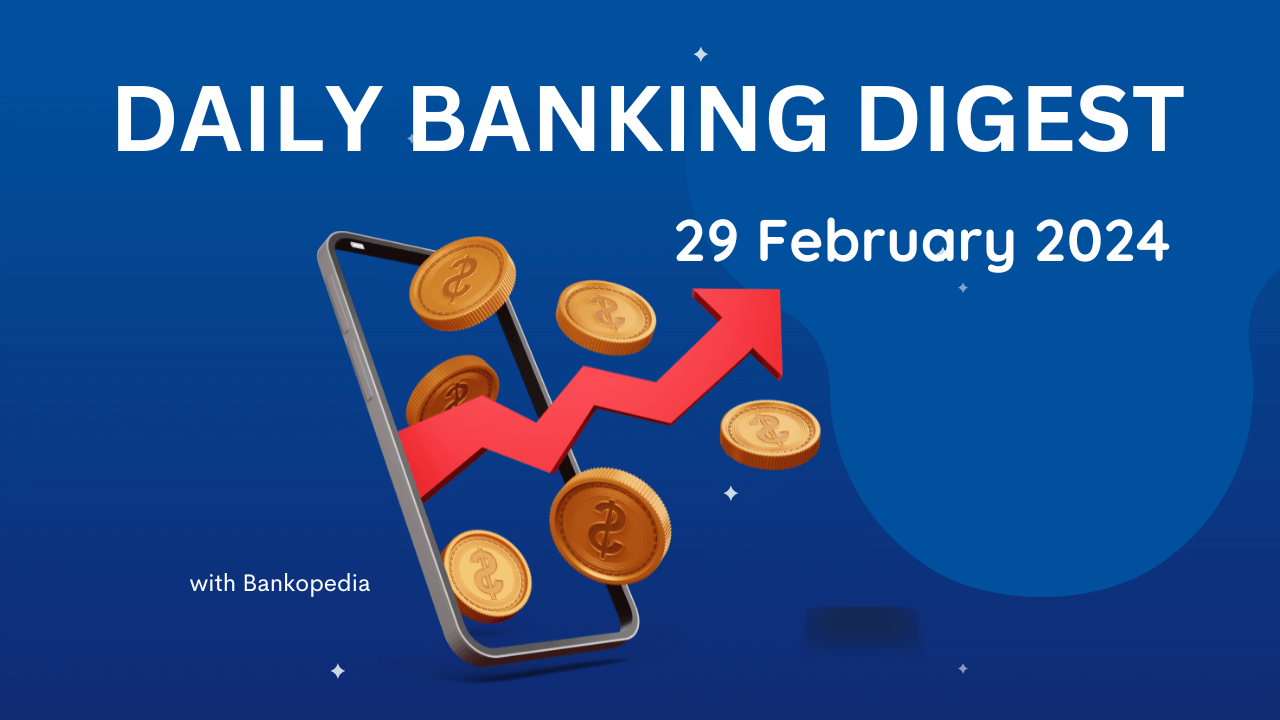Daily Banking Digest – 17 February 2024
Welcome to Daily Banking Digest, your premier source for the latest news and insights on February 17, 2024, focusing on banking, the economy, and finance. Our platform offers a comprehensive overview of the day’s most critical financial stories, market trends, and economic developments. Whether you’re a professional in the financial sector, an investor monitoring market movement, or someone interested in staying informed about the economic landscape, Daily Banking Digest provides reliable, up-to-date information.
Join our Telegram Channel for Daily PDF in your Inbox – Click Here
Table of Contents
India’s crude oil imports in January hit 20-month high of 21.4 million tonnes| Daily Banking Digest
India’s crude oil imports reached a 20-month high in January 2024. This surge in imports was driven by strong domestic demand and refiners seeking to boost refined product exports.

Key Points:
- Record Import Levels: India imported 21.4 million tonnes of crude oil in January 2024, the highest amount since April 2022.
- Factors Driving Imports: The increase in imports is attributed to rising domestic consumption and efforts to meet growing demand for refined products in global markets.
- Import Trends: India’s crude oil imports weakened during the monsoon season of 2023 but picked up again from October due to festivals, mining, and construction activities.
- Higher Iraqi Imports: India increased imports from Iraq due to Red Sea disruptions and high freight costs from the Atlantic Basin.
- Outlook: Crude oil imports are expected to remain high in February due to Middle East tensions and refiners preparing for domestic and export demand.
- Export Growth: Exports of refined petroleum products also increased in January.
- Demand Drivers: Domestic demand growth will be influenced by upcoming elections and increased industrial activity.
- Global Demand: India is expected to be a significant contributor to global oil demand growth in 2024.
Boosting real estate recovery: IBBI launches ‘project-wise resolution’ initiative
The IBBI (Insolvency and Bankruptcy Board of India) has introduced changes to boost the real estate sector by allowing project-wise resolutions within insolvency cases. This offers flexibility and aims to prevent stalled solvent projects from being negatively impacted by defaults in other projects within the same company.

Key Points:
- Project-Specific Resolutions: The Committee of Creditors (CoC) can now request separate resolution plans for individual real estate projects involved in insolvency.
- Separate Bank Accounts: Insolvency/Resolution Professionals must keep separate bank accounts for each real estate project of the company facing insolvency.
- Rationale: This change aims to address situations where a single project default negatively impacts other healthy projects within the same company.
- Enhanced Oversight and Transparency:
- Regular CoC meetings are mandated to review costs and increase oversight.
- Valuation methodologies must be shared with the CoC for improved transparency.
- Expert Opinions: Industry experts welcome the move, seeing it as a potential boost to the real estate sector by streamlining insolvency processes and potentially improving outcomes.
RBI modifies directions for Paytm Payments Bank, invokes Banking Regulations Act
The Reserve Bank of India (RBI) has partially extended the deadline for certain restrictions placed on Paytm Payments Bank (PPBL), giving customers more time to make alternative arrangements. While most banking services will be unavailable after March 15, 2024, customers will still be able to withdraw their existing funds without restrictions.

Key Points:
- Restrictions Extended: The deadline for stopping new deposits and most banking services has been extended from February 29, 2024 to March 15, 2024.
- Withdrawals Allowed: Customers can continue to withdraw their available balance from any account or wallet without any restrictions.
- Limited Banking Services: After March 15, 2024, only withdrawals and transactions related to those withdrawals will be allowed. Services like fund transfers, AEPS, IMPS, and UPI will be unavailable.
- Nodal Account Closure: The Nodal Accounts of One97 Communications Ltd and Paytm Payments Services Ltd must be closed by February 29, 2024.
- Transaction Settlement: All pending transactions in the Nodal Accounts must be settled by March 15, 2024.
- Smooth Withdrawals: The bank must ensure a smooth withdrawal process for customer deposits parked with partner banks under the “sweep-in sweep-out” facility.
- FAQs Issued: The RBI has issued a list of FAQs for the convenience of PPBL customers and the general public.
Gold loan companies request RBI to probe banks violating loan-to-value norms.

The Association of Gold Loan Companies has accused some banks of violating the loan-to-value (LTV) ratio cap for gold loans, even after the RBI’s temporary relaxation ended in March 2021. This puts NBFCs at a disadvantage and is unfair competition.
Key Points:
- Gold Loan LTV Violation: The Association of Gold Loan Companies alleges that some banks are exceeding the 75% LTV limit for gold loans, giving them an unfair advantage over NBFCs.
- RBI Relaxation Ended: The RBI had increased the LTV limit to 90% temporarily during the pandemic, but it reverted to 75% in March 2021.
- Agricultural Gold Loans: Banks are reportedly focusing more on gold loans for agricultural purposes, which comes with benefits like priority sector lending classification and easier recovery.
- NBFC Market Share: The competitive landscape has shifted with banks capturing a larger share of the gold loan market, leading to moderated growth for NBFCs.
- NBFC Strategies: NBFCs are trying to regain market share through various strategies like expanding reach, targeting specific customer segments, and offering better employee benefits.
- Gold Price Support: Rising gold prices due to inflation, global slowdown, and rupee depreciation could create headroom for further credit growth in the gold loan sector.
India initiates anti-dumping probe into imports of solar glass from China, Vietnam
India has launched an anti-dumping investigation into imports of a specific type of solar glass from China and Vietnam, following a complaint from a domestic manufacturer. This comes amidst concerns about unfair pricing practices harming domestic producers.
Key Points:
- Investigation Launched: India’s Directorate General of Trade Remedies (DGTR) is investigating imports of “Textured Tempered Coated and Uncoated Glass” (solar glass) from China and Vietnam, following a complaint by Borosil Renewables Ltd.
- Potential Anti-Dumping Duty: If dumping and injury to domestic industry are proven, DGTR may recommend imposing anti-dumping duties on these imports. The final decision rests with the Finance Ministry.
- Dumping Allegations: Evidence suggests Chinese and Vietnamese exporters are dumping this product in the Indian market, potentially harming domestic producers.
- Fair Trade Objective: Anti-dumping duties aim to ensure fair trade practices and create a level playing field for domestic solar glass manufacturers by addressing artificially low import prices.
- WTO Compliance: This investigation aligns with India’s WTO commitments to address dumping concerns.
- Previous Actions: India has previously imposed anti-dumping duties on various products from other countries to counter unfair import practices.
Govt starts centralised processing of filings under companies law.
The Indian government has created a Central Processing Centre (CPC) to streamline the processing of company and LLP filings, improving the ease of doing business. The CPC will handle a portion of regulatory filings under the Companies Act.
Key Points:
- CPC Operational: The CPC is now processing filings related to the Companies Act, initially focusing on 12 specific forms and applications. More types of filings will be added from April 1st onwards.
- Processing Efficiency: The CPC aims to process filings quickly and without in-person interactions. Currently, around 5,000 forms have already been received.
- Focus Shift for Local Registrars: The CPC will free up local Registrars of Companies (RoC) to concentrate on inspections, investigations, and ensuring corporate governance.
- LLP Filings Next: Forms and applications related to Limited Liability Partnerships (LLPs) will also be processed centrally in the future.
- Processing Volume: Once fully operational, the CPC is expected to process roughly 250,000 filings annually.
- Other Initiatives: The Ministry of Corporate Affairs has also implemented the Central Registration Center (CRC) and Centralized Processing for Accelerated Corporate Exit (C-PACE) to enhance efficiency.
- Growth in New Incorporations: India has seen a 92% increase in company incorporations since 2013-14, making streamlining essential.
- Faster Closures: C-PACE is successfully reducing the time for voluntary company closures to an average of less than four months.
Karnataka Budget: Govt to waive interest on overdue loans of district cooperative banks.
The Karnataka government has announced a major initiative to help farmers by waiving interest on overdue loans from cooperative banks. This decision, along with other agriculture-focused programs, aims to improve the agricultural sector and support farmers in the state.

Key Points:
- Interest Waiver: The government will waive interest on medium- and long-term overdue loans held by District Cooperative Central (DCC) and Primary Cooperative Agriculture and Rural Development (PICARD) banks.
- Beneficiaries: Over 57,000 farmers will benefit from this scheme.
- Financial Impact: Banks are expected to recover Rs. 496 crore in loans, and the government will provide Rs. 450 crore as compensation.
- Increased Loan Limits: In 2023-24, loan limits for interest-free short-term loans and subsidized medium/long-term loans were increased.
- New Agricultural Programs:
- Karnataka Raitha Samruddhi Yojane: A new scheme to consolidate various agriculture-related programs.
- Namma Millet: Program to promote millets and make them affordable.
- Water Conservation: Creation of 5,000 water bodies for sustainable agriculture.
- Food Parks and Kisan Malls: Establishment of food parks near airports and “Kisan Malls” to aid farmers with technical support and market access.
- Floriculture and Spice Promotion: Development of a floriculture market in Bengaluru and a “Spice Park” in Chikkamagaluru district.
- Support for Dairy Farming: Interest subsidy scheme for women taking loans to buy cows or buffaloes.
- Fisheries Development: Investment of Rs. 3,000 crore for the fisheries sector and the introduction of India’s first sea ambulance.
Karnataka Budget announcements by CM Siddaramaiah: Key highlights and details

Karnataka Chief Minister Siddaramaiah presented the state budget, focusing on fulfilling government guarantees and addressing concerns about revenue generation. The budget criticizes the central government’s GST implementation, claiming it led to financial losses for Karnataka.
Key Points:
- Budget Deficit: Despite a revenue deficit, the CM emphasized increased spending on welfare programs, totaling Rs. 1,20,373 crore.
- GST Shortfall: Siddaramaiah highlighted that Karnataka has incurred a loss of Rs. 59,274 crore over seven years due to the Centre’s “unscientific” implementation of GST. The state only received partial compensation for revenue shortfall.
- Key Announcements:
- Digitization of Excise Department services
- Revision of tax slabs for liquor (IML) and beer
- Revised tourism policy to attract investment
- Rs. 100 crore for tourism development in Anjanadri Hills
- Welfare Highlights:
- Rs. 200 crore allocation for Christians
- Rs. 100 crore for Wakf property development
- Waiver of interest on overdue loans from district cooperative banks
- Other Initiatives
- Integration of public transport systems to ease traffic
- Promotion of millets with the “Namma Millet” program
- Digital ownership documents for Bengaluru properties
Crypto currencies have no underlying value, says RBI official.
A Reserve Bank of India (RBI) official stated that cryptocurrencies lack underlying value and cannot be considered true currencies. The RBI remains critical of these new-age currencies due to their potential systemic risks to the financial system.

Key Points:
- Cryptocurrency Classification: RBI official P. Vasudevan argues that cryptocurrencies cannot be called currencies due to their lack of inherent value.
- Government Decision Needed: Deciding how to regulate cryptocurrencies ultimately rests with the Indian government.
- Current Status: Cryptocurrencies lack legal backing in India, and trading income from them is taxed.
- Self-Regulation for Fintech: Vasudevan suggests self-regulation as a better protective measure for the fintech sector than external restrictions.
- Bad Actor Identification: Exploring mechanisms to identify and highlight problematic behavior within the fintech industry is necessary.
RBI’s resounding message to fintechs: Quick and easy but with KYC

The Reserve Bank of India (RBI) has taken action against Paytm Payments Bank for repeated non-compliance with KYC regulations. This highlights the RBI’s focus on enforcing regulations within the fintech sector, even when it means limiting innovation.
Key Points:
- RBI Action on Paytm: The RBI has ordered Paytm Payments Bank to halt basic banking services due to persistent non-compliance with KYC processes.
- Not an Isolated Case: The RBI has taken similar actions against other fintech companies for regulatory violations, including HDFC Bank, Bank of Baroda, and Bajaj Finance.
- Focus on Compliance: The RBI’s message is clear – fintech innovation cannot come at the cost of regulatory compliance, particularly with KYC processes.
- Wider Implications: The RBI is scrutinizing the fintech sector more broadly, with a recent directive halting B2B card payments due to regulatory concerns.
- Sectoral Challenge: Fintech startups often face challenges in balancing rapid customer onboarding with rigorous KYC verification. Cost and infrastructure barriers also play a role.
- KYC as a Priority: Fintech businesses must prioritize regulatory compliance, particularly KYC, even when prioritizing growth.
SBI in talks with RBI to lower cash reserve ratio requirement on green deposits
SBI Chairman Dinesh Khara is seeking regulatory changes from the RBI regarding “green deposit” schemes. These changes would help incentivize environmentally sustainable lending practices.

Key Points:
- CRR Talks: SBI is negotiating with the RBI to reduce the cash reserve ratio (CRR) requirement for green deposits. This would provide banks with more funds to lend for green projects.
- Pricing Impact: Khara believes these regulatory changes could positively impact the pricing of green deposit schemes over time.
- Green-Shoring Concerns: SBI recognizes the potential for “green-shoring” (falsely labeling financial activities as green) and advocates for more accurate rating standards.
- ESG Practices: SBI is evaluating borrowers based on environmental, social, and governance (ESG) factors.
- Regulatory Framework: The RBI has a framework for green deposits in place, requiring banks to secure deposits before proceeding with green project financing.
West Bengal govt authorises Bandhan Bank for collection of tax, non-tax receipts.

Bandhan Bank has been granted a mandate by the West Bengal government to collect tax and non-tax payments through the Government Receipt Portal System (GRIPS). This partnership aims to make the payment process more convenient and accessible for citizens.
Key Points:
- GRIPS Integration: Bandhan Bank will integrate with GRIPS to enable payment collection for various taxes and government services.
- Citizen Benefits: The partnership provides West Bengal residents with convenient, paperless, and accessible payment options through Bandhan’s extensive network of 1700+ banking outlets.
- Types of Payments: Citizens can use GRIPS to pay property tax, motor vehicle tax, professional tax, and fees for various services across 29 government departments.
- GRIPS Volume: Approximately Rs. 50,000 crores were collected through GRIPS in FY 2022-23.
- Bank Recognition: This mandate highlights the trust placed in Bandhan Bank by the West Bengal government and further strengthens the bank’s prominence in the region.
RBI’s restrictions card network will reduce volumes but not hit profits of banks’ card business
The RBI’s restriction on business card issuance by non-bank intermediaries will likely reduce card transaction volume. However, due to lower profit margins on such cards, industry earnings are unlikely to be heavily impacted.

Key Points:
- RBI Restriction: The RBI has acted to curtail card networks from supporting business card issuance by non-bank entities due to regulatory violations regarding unregistered merchants.
- Volume vs. Profitability: Though transaction volume is likely to decline, overall profitability in the card business will not be heavily affected as corporate/business cards have limited fees and lower margins compared to retail cards.
- Industry Practices: Banks may have exploited certain aspects of corporate card usage, such as “on-us” transactions or securing other business from corporates, to offset lower profitability.
- Fintech Impact: Fintech companies (EnKash, Paymate, etc.) that relied on this card service model have been directed to cease these offerings.
- Market Share: HDFC Bank and SBI (via SBI Cards and Payments Services) hold the most significant credit card market share.
Govt asks industry players to invest in technology towards greener future.
The Indian government is strongly promoting investment in coal and lignite gasification projects to support cleaner energy initiatives and reduce reliance on imports. Industry leaders were urged to participate in the process, with government support promised.
Key Points:
- Emphasis on Gasification: The Coal Secretary highlighted the significance of coal and lignite gasification in India’s energy transition towards a more sustainable future.
- Government Support: The government will provide financing and incentives to promote clean coal technologies.
- Call for Industry Participation: Stakeholders are encouraged to participate in the RFP (Request for Proposal) process to ensure transparency and broader input.
- Coal India’s Role: Coal India Ltd (CIL) is at the forefront of gasification initiatives, focusing on innovation and sustainability to help achieve net-zero targets by 2070.
- Cabinet Approval: The Union Cabinet has approved a Rs. 8500 crore incentive scheme to bolster coal gasification projects.
- Import Reduction: Increased gasification will lessen India’s dependency on imports of natural gas, methanol, ammonia, and other crucial products.
Foreign exchange reserves snaps two-week gaining streak, shows RBI data

India’s foreign exchange reserves decreased by $5.27 billion in the reporting week, breaking a two-week upward trend. This drop is the most significant in a month and leaves reserves at $617.23 billion.
Key Points:
- Reserve Decline: After gaining $6.36 billion over the previous two weeks, India’s foreign exchange reserves decreased by $5.27 billion, which is the largest drop within a month.
- RBI Intervention: Reserve changes are mainly a result of the Reserve Bank of India’s (RBI) interventions in the foreign exchange market to manage rupee volatility.
- Reserve Composition: Reserves include foreign currency assets and India’s reserve position with the International Monetary Fund (IMF).
- Rupee Performance: During the reporting week, the rupee depreciation by 0.1% against the US dollar.
- Data Context This data highlights fluctuations in India’s foreign exchange reserves, influenced by factors such as RBI intervention and changes in asset valuation.
Rating agencies need to review their framework, says CEA Nageswaran
Chief Economic Advisor V Anantha Nageswaran criticizes credit rating agencies for their role in exacerbating economic crises, suggesting a review of their framework is necessary. He questions the perceived fragmentation of the global economy and emphasizes the extended timeline for realigning supply chains away from China.

Key Points:
- Criticism of Credit Rating Agencies: Nageswaran states that credit rating agencies need to revise their methods, citing their tendency to downgrade countries when fundamentals have already eroded, thus hindering recovery efforts.
- Role in 2008 Crisis: He specifically highlights their contribution to the 2008 financial crisis by miscalculating risks and downgrading countries too sharply.
- Monetary Policy Focus: Nageswaran stresses that countries should prioritize domestic economic needs when determining monetary policies, as global financial interests can worsen impacts on developing nations.
- Global Fragmentation Debate: While acknowledging shifts like “friend-shoring”, Nageswaran questions the widespread belief in increased global economic fragmentation, noting complexities in analysing trade data.
- De-risking from China: Nageswaran asserts that reducing reliance on Chinese supply chains will be a gradual, complex process.
India resumes buying Russian Sokol oil after 2-month hiatus: Report.
India has restarted imports of Russian Sokol oil after a two-month pause. This change likely involves using UAE dirhams for transactions and potentially utilizing traders as intermediaries to reduce supply disruptions.

Key Points:
- Import Resumption: Indian refiners, including Hindustan Petroleum Corp (HPCL), are buying Sokol oil, with shipments arriving in February.
- Payment Shift: This change may involve using UAE dirhams instead of previously blocked Chinese yuan transactions.
- Previous Disruption: India stopped buying Sokol oil due to government guidance amid political tensions, leading to unsold supplies.
- Private Refiner Participation: Nayara Energy, which has Russian ownership, is also taking Sokol oil deliveries.
- Russian Strategy: Russia could increasingly sell Sokol oil via trading firms to manage surplus stocks and maintain stable payments.
Outward FDI rises 25.7% to $2.1 billion in January, shows RBI data
India’s outward foreign direct investment (FDI) increased in January 2024 compared to the same period last year. However, there was a sequential decline compared to December 2023.

Key Points:
- FDI Rise: Outbound FDI commitments saw a 25.7% year-on-year increase, reaching $2.09 billion in January 2024.
- Sequential Decline: Despite the yearly increase, there was a decline in commitments compared to December 2023.
- Equity Growth: Equity commitments (a core component of FDI) showed a year-over-year increase.
- Debt Variability: Debt commitments increased year-over-year but decreased significantly from December 2023 levels.
- Guarantee Rise: Guarantees for overseas units increased compared to both January 2023 and December 2023.
Govt is mulling listing of PSEs’ green energy arms, says Dipam secretary
The Indian government is considering listing subsidiaries of some public energy companies on the stock market. This decision aims to deepen the market, improve the performance of these companies, and potentially raise capital through IPOs.
Key Points:
- Subsidiary Listings: The Department of Investment and Public Asset Management (DIPAM) is exploring the possibility of listing subsidiaries of certain public energy companies on the stock market.
- Growth Potential: These subsidiaries, particularly those focused on green energy, are seen as having high growth potential.
- Market Deepening: Listing these companies would help to deepen the Indian capital market.
- Performance Improvement: The government believes that listed companies tend to perform better than unlisted ones.
- Capital Raising: IPOs of these subsidiaries could be a way for the government to raise capital.
- Strategic Divestment: The government emphasizes that any divestment of shares should be done strategically to avoid negative impacts on the market or company valuations.
RBI may absorb foreign inflows via bond index inclusion: JP Morgan’s Chinoy
The inclusion of Indian government bonds in JP Morgan’s GBI-EM index is expected to bring $25 billion in inflows, but the RBI will likely absorb these flows, minimizing the impact on the rupee-dollar exchange rate. This is because India’s reserves are primarily borrowed reserves, and the RBI actively manages the dollar-rupee relationship. If the dollar weakens in the coming months, it could present an opportunity for India to depreciate its currency and gain trade competitiveness.
Key Points:
- JP Morgan GBI-EM Inclusion: Indian government bonds will be included in JP Morgan’s GBI-EM index, potentially leading to $25 billion in inflows.
- RBI Absorption: The RBI is expected to absorb these inflows to minimize the impact on the rupee-dollar exchange rate.
- Reserve Composition: India’s reserves are mainly borrowed reserves, unlike other Asian countries with current account surpluses.
- Dollar-Rupee Dynamics: The RBI sells dollars when the dollar strengthens, causing the rupee to outperform other emerging market currencies. Conversely, it buys dollars when the dollar weakens, leading to rupee depreciation.
- Potential Opportunity: If the dollar weakens over the next year, India could strategically depreciate its currency to boost trade competitiveness.
- Phased Inclusion: The bond inclusion will happen gradually over 10 months, with a 1% weight added each month until March 2025.
- Total Weight: Indian bonds will have a 10% weight in the index, similar to China.
PFRDA brings pension funds under PMLA net.
The Pension Fund Regulatory and Development Authority (PFRDA) has significantly updated its regulations to tighten oversight on pension funds and align with evolving industry practices. These changes include bringing pension funds under stricter money laundering regulations and introducing “fit and proper” criteria for key personnel.

Key Points:
- Anti-Money Laundering: Pension funds are now subject to the Prevention of Money Laundering Act (PMLA).
- “Fit and Proper” Criteria: PFRDA now mandates specific background checks for Principal Officers of pension funds to ensure suitability.
- NAV Calculation: New regulations establish standardized methods for calculating the Net Asset Value (NAV) of pension fund schemes.
- Governance Committees: Pension funds must form nomination and remuneration committees as part of their boards.
- Naming Conventions: Pension funds must incorporate the term “pension fund” into their official names.
- Compliance Certificate: Pension funds will be required to submit compliance certificates to the PFRDA.
- Regulatory Review: These changes stem from a directive to reduce regulatory burdens while maintaining robust oversight.
- Rapid Asset Growth: The pension industry has seen strong growth in assets under management (AUM), surpassing Rs. 11 lakh crore.
At WTO, India proposes lower cost of cross-border payments.
India has submitted a proposal to the World Trade Organization (WTO) advocating for reduced costs of cross-border remittances to support international trade. The proposal emphasizes the significance of interoperable digital payment systems in achieving this goal.

Key Points:
- High Remittance Costs: India highlights the substantial average cost (6.18%) of sending remittances globally, which hinders efforts to combat inequality and achieve Sustainable Development Goals (SDGs).
- Digital Solutions: Digital remittances offer a more cost-effective solution (4.84% average cost) compared to traditional methods.
- SDG Alignment: India’s proposal supports the SDG target of reducing remittance costs to below 3% and eliminating costlier remittance channels.
- Beneficiaries: Lower remittance costs would primarily benefit low- and middle-income countries, which receive a significant portion of global remittances.
- WTO Work Programme: India proposes a WTO work program to investigate trends, technologies, and factors influencing cross-border remittance costs.
- Global Support: Countries like the Philippines and South Africa have also expressed support for this initiative.
India is the third largest digitalised country in the world, says expert.
A recent study highlights India’s significant progress in digitalization. India now ranks third globally in overall digitalization, surpassing several developed nations. However, when considering individual user adoption, India still has room for improvement.
Key Points:
- Global Ranking: India is the third most digitized country in the world, trailing only the USA and China.
- Outperforming Developed Nations: India’s digitalization surpasses that of countries like the UK, Germany, and Japan.
- Individual Adoption: While India’s overall digitalization is impressive, it ranks 12th among G20 countries in terms of digitalization at the individual user level.
- CHIPS Framework: The study’s assessment is based on the “CHIPS” framework, which evaluates countries across five pillars: connect, harness, innovate, protect, and sustain.
Financial Concept of the day – Appreciation of Currency
Appreciation of currency in finance refers to an increase in the value of one currency compared to another. When a currency appreciates, it can purchase more units of a foreign currency. This means that goods and services from the foreign country become cheaper to import, while exports from the appreciating country become more expensive for foreign buyers.
Example in Indian Rupees
Let’s illustrate with a hypothetical example:
- Initial Exchange Rate: 1 US Dollar (USD) = 75 Indian Rupees (INR)
- Appreciation Scenario: Suppose the Indian rupee appreciates against the US dollar. The new exchange rate becomes 1 USD = 70 INR.
In this scenario, here’s what happens:
- Increased Purchasing Power: Each Indian rupee can now buy more US dollars than before.
- Cheaper Imports: If an Indian importer wants to buy a US product that costs $100, they would have initially needed 7,500 INR. After appreciation, they’ll only need 7,000 INR.
- Expensive Exports: An Indian exporter selling a product worth 10,000 INR to a US buyer would have initially received about $133. However, after appreciation, they would receive only about $143 (at the new exchange rate). This could potentially make Indian exports less competitive for foreign buyers.
Causes of Appreciation
Several factors can cause a currency to appreciate:
- Strong Economic Growth: A healthy, growing economy often attracts foreign investment, creating demand for the domestic currency.
- High Interest Rates: Higher interest rates in a country can make its currency more attractive to investors, increasing demand.
- Positive Trade Balance: When a country exports more than it imports, demand for its currency rises.
- Government Policies: Governments can influence currency values through their economic policies and central bank interventions.











